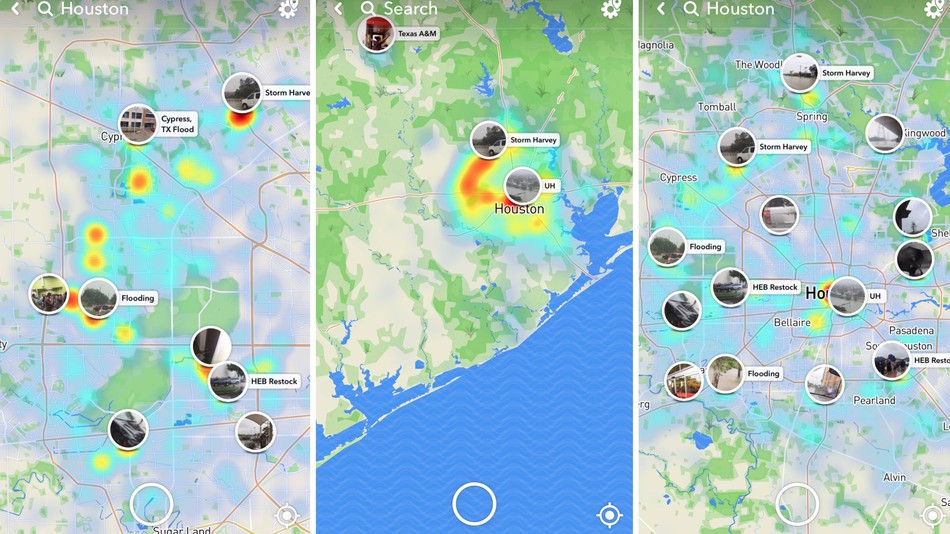
How Hurricane Harvey helped Snap Map shed its ‘creepy AF’ status
 Snapchat’s Snap Map debuted in June this year, but it wasn’t until Harvey flooded Texas in late August that the nifty location-sharing tool finally got its moment in the sun (no pun intended).
Snapchat’s Snap Map debuted in June this year, but it wasn’t until Harvey flooded Texas in late August that the nifty location-sharing tool finally got its moment in the sun (no pun intended).
For the uninitiated, what Snap Map does is allow you to see on a map where your friends are. They would be illustrated by cute little caricatures called Actionmoji. You can select who can see your location – every friend of yours or a select few – and there’s even a ‘Ghost Mode’ for all those times when you don’t want to share your coordinates.
And yet, Snapchat received a lot of flak from privacy advocates who were quick to declare this new feature as creepy and hailed it as a stalker’s paradise.

That changed last month when people started looking for a first-hand account of what’s happening in Houston. Snap Map really came into its own via the public ‘Our Story’ feed which shows anonymized, real-time photos and videos from hot spots or trending locations around the world.
In the 86 hours that Harvey unleashed its full fury on Texas, Snap Map’s Our Story stream received between 250,000 to 300,000 submissions. Houston Public Media, in fact, encouraged people trapped in the affected areas to use the service to stay aware and informed.
Since Snap Map’s geotagging tool is quite precise, those in trouble could find out where the nearest shelter was, or where volunteers were distributing food and supplies. People who had evacuated the flooded areas and were worried about their friends and property used the tool to check in on the damage.
One Reddit user posted, “Snapmap (sic) is my lifeline right now. I have close friends in Houston and have been monitoring this for days with a heavy heart from Austin. Thankfully, one just got rescued by coast guard boat!”
Another said, “I’ve been worried about not hearing from my best friend in hours. According to the map, it seems like she’s okay.”
And those who had criticized Snap Map in the past were forced to rethink their decision:
I made fun of the Snapchat map feature but it’s cool af watching all those snap stories of Harvey
— Em (@emily1717m) August 26, 2017
Now, we may not be able to quantify Snap Map’s exact contribution in Harvey relief efforts, but there’s no doubt that the location-based tool has played an invaluable role in humanizing a disaster – for both those who were stricken by it and those who were watching from afar.





